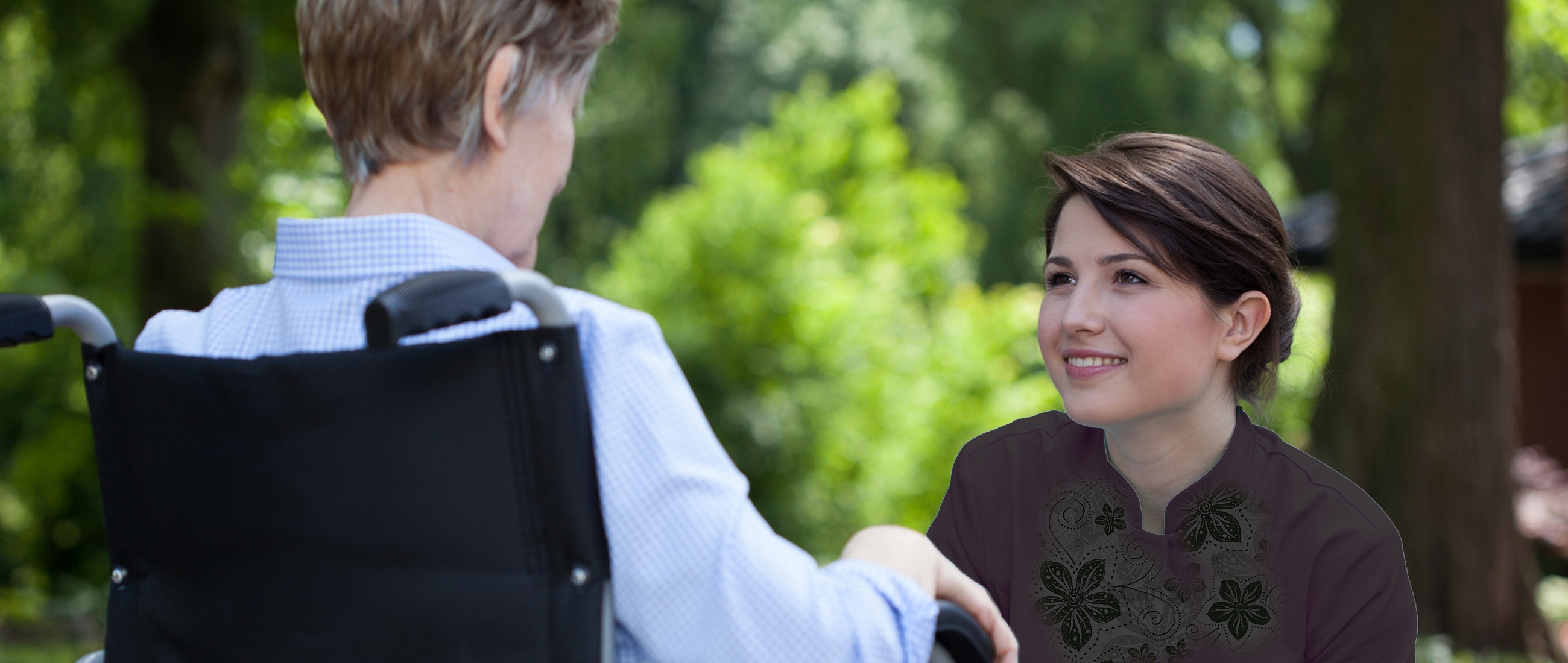Real life stories
Everyone can communicate

Everyone can communicate, even if like Amy you can't speak. A big part of our work is finding different ways of communicating other than just speech.
Amy had a tough start in life. Her complex physical and learning disabilities mean that she can’t use speech to tell others what she wants or needs. She started injuring herself at 18 months old, and continued seriously self-harming into adulthood.
When we first met Amy she was living with her family in a beautiful vardo (a static home) in a Gypsy community. Her family were exhausted and struggling to meet her needs. Amy had moved back in with them after being left alone and unsupervised in her first adult care home. She had injured herself causing severe tissue damage. When her mother saw her, she was so distressed she took Amy home immediately. She knew the difficulties that lay ahead, but as a devoted parent could not bear to see her daughter suffering.
Everyone can communicate. By injuring herself Amy was saying something in the only way she knew. We understood that in order to support Amy, we had to interpret what her self-injurious behaviour meant. Our Positive Behaviour Support (PBS) team started by observing what happened before, during and after Amy's episodes of self-injury. We read about her past. We talked to her family and everyone else, like her physiotherapist, who knew her well. We found out that Amy probably self-harmed either because she got a response, or to keep her senses stimulated. Her self-harming was saying “I am unhappy, I’m bored, or I need something”.
We started to get to know Amy, what she wanted, and created a detailed support plan containing all this knowledge. This was then used to train Amy’s new staff to understand what her behaviours meant and how best to support her. For example, in the past Amy had a harness and cuffs fitted to her wheelchair to restrict her movement, as people were afraid she’d harm herself. We noticed that Amy was happier and less likely to injure herself when these were removed.
Great support for Amy is about having someone else close and doing things with her. She thrives on attention and interaction. Finding constructive ways to stimulate her senses means Amy doesn’t need to do this through self-injury. If we listen to music with her, for example, she will tap in rhythm when content, allowing staff to tap back and sing to her, which she enjoys.
I usually look for the bad in situations rather than the good but since Amy has been with Choice Support, I have not been able to find any bad. Amy’s mother
I am extremely pleased with her home and the staff support. Amy's mother
A person’s ability to communicate is not dependent on their being able to master certain skills, it is dependent on our ability to listen and communicate responsively. Jo Grace, The Sensory Projects, PMLD Standards
Seeing the way people who are profoundly disabled can join in and enjoy a story using touch and smell, as well as sound, was a deeply rewarding experience. Feedback, Choice Support Sensory Stories Workshop
Supporting Amy is intense work, so staff shifts were carefully planned to avoid staff burning out. But as time went on Amy’s staff began to admire her spirit and build good relationships with her. She, in turn, learned to trust her support workers and enjoy their company. She vocalises sounds, laughs, smiles and hugs them. Amy still self-injures occasionally but the frequency and intensity has reduced significantly, and staff know how to diffuse the behaviour. She now goes out every day. She loves being outside and has a busy schedule of activities and things she likes to do.
As well as our Positive Behaviour Support (PBS) team we have our own national Inclusive Research and Involvement team who can liaise between community therapists and our staff to ensure that any recommendations are quickly put in place. Our Involvement team also offers in-depth communication support and staff training. This ensures we value each person we support and competently use the best ways to communicate with them.


